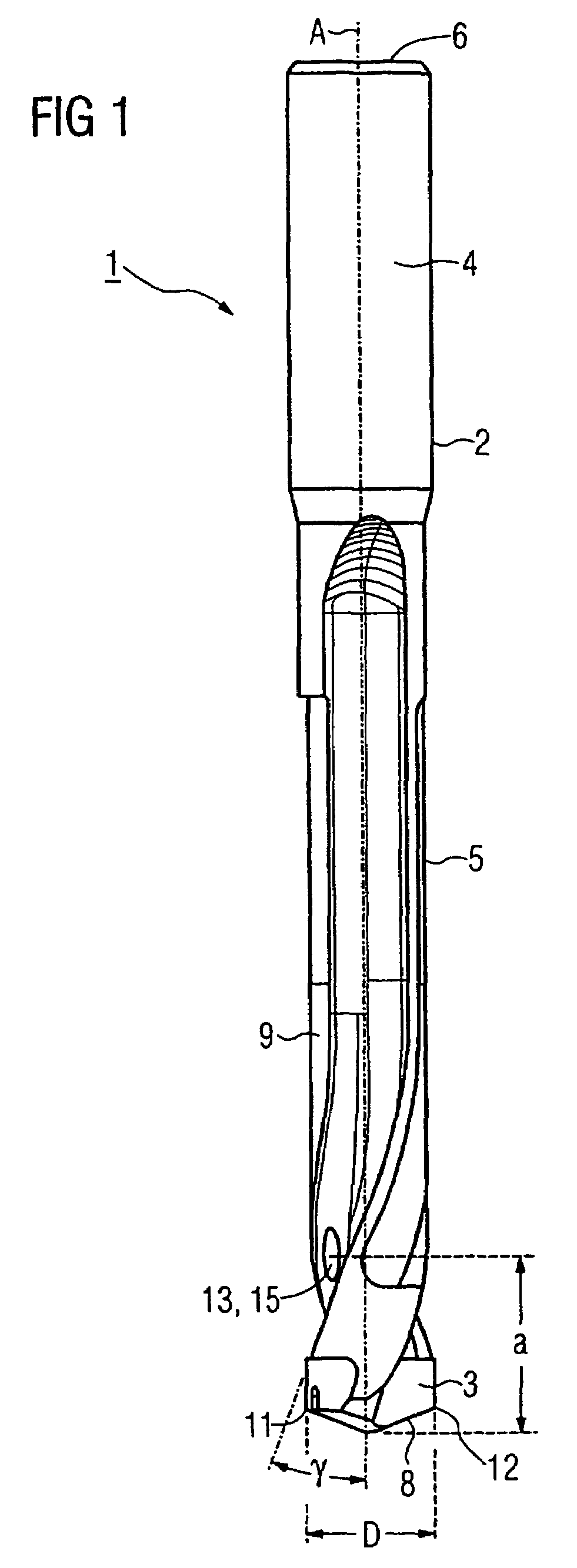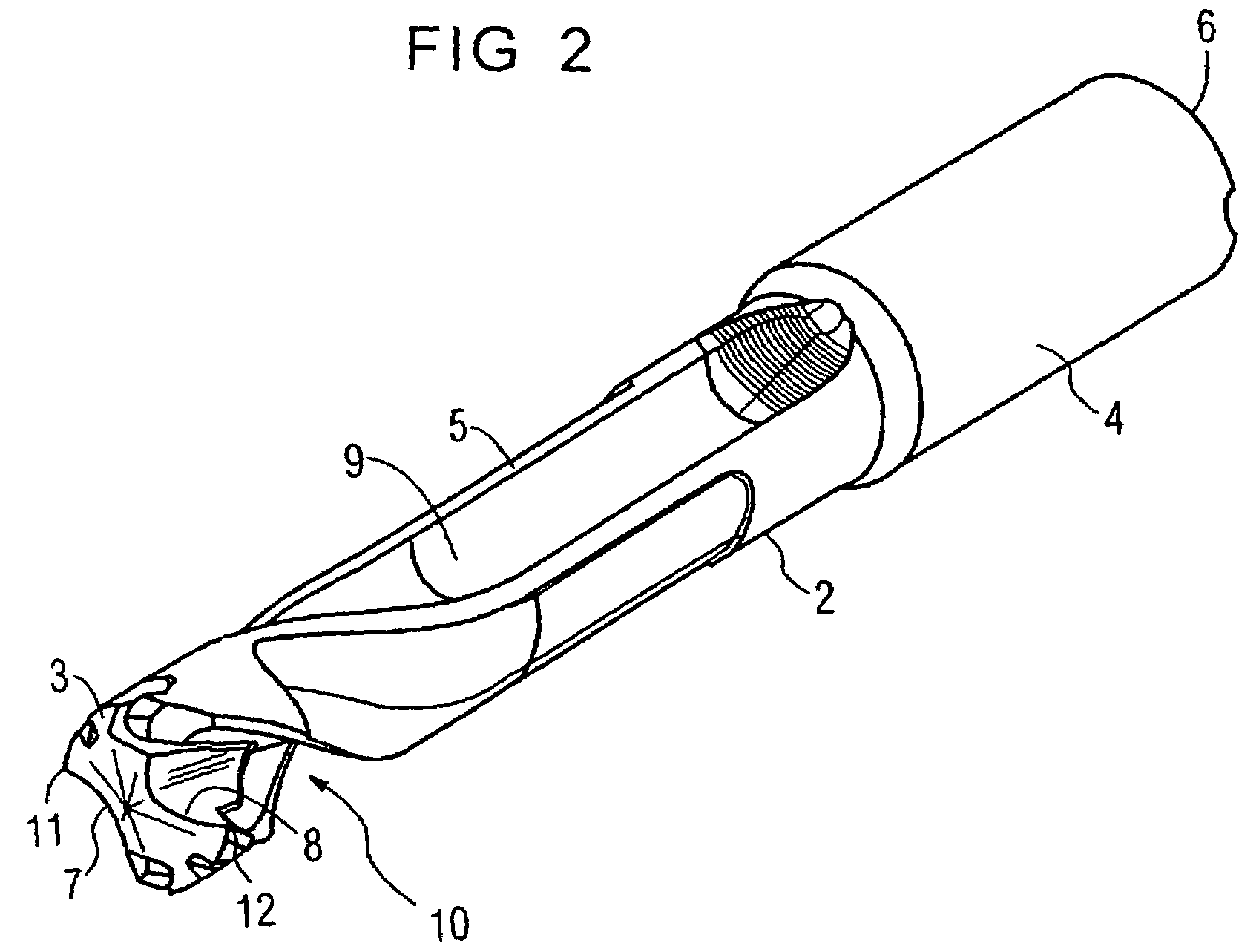Drill bit
a drilling tool and bit technology, applied in the field of drilling tools, can solve the problems of high temperature during cutting, inability to achieve the desired effect of cooling lubricant, and complex design of cooling lubricant supply, and achieve the effects of easy chip removal, small fragmentation, and high temperature-dependent mechanical properties
- Summary
- Abstract
- Description
- Claims
- Application Information
AI Technical Summary
Benefits of technology
Problems solved by technology
Method used
Image
Examples
Embodiment Construction
[0033]The same parts are labeled identically in all drawings.
[0034]FIGS. 1 and 2 depict an initial embodiment of drill bit 1, also referred to as tool, which is comprised of body 2 and tool tip 3. Body 2 is preferentially made of steel, while tool tip 3 is preferentially made of carbide metal. Differing from the embodiment depicted, drill bit 1 may also be made out of a single piece of carbide metal. Drill bit 1 may also have several exchangeable cutting elements, for example indexable inserts. All materials or parts thereof, including ceramics, conventionally used in cutting technology can be used as materials for drill bit 1. For cutting elements or coatings, polycrystalline diamonds (PCD) or cubic boronitride (CBN) are suitable. In at least one embodiment, the entire drill bit 1 is made integrally as a single piece without any interchangeable parts or portions.
[0035]Drill bit 1 comprises shaft 4 to which is attached a cutting part 5, which in turn comprises tool tip 3. Shaft 4, w...
PUM
| Property | Measurement | Unit |
|---|---|---|
| twist angle | aaaaa | aaaaa |
| twist angle | aaaaa | aaaaa |
| twist angle | aaaaa | aaaaa |
Abstract
Description
Claims
Application Information
 Login to View More
Login to View More - R&D
- Intellectual Property
- Life Sciences
- Materials
- Tech Scout
- Unparalleled Data Quality
- Higher Quality Content
- 60% Fewer Hallucinations
Browse by: Latest US Patents, China's latest patents, Technical Efficacy Thesaurus, Application Domain, Technology Topic, Popular Technical Reports.
© 2025 PatSnap. All rights reserved.Legal|Privacy policy|Modern Slavery Act Transparency Statement|Sitemap|About US| Contact US: help@patsnap.com



